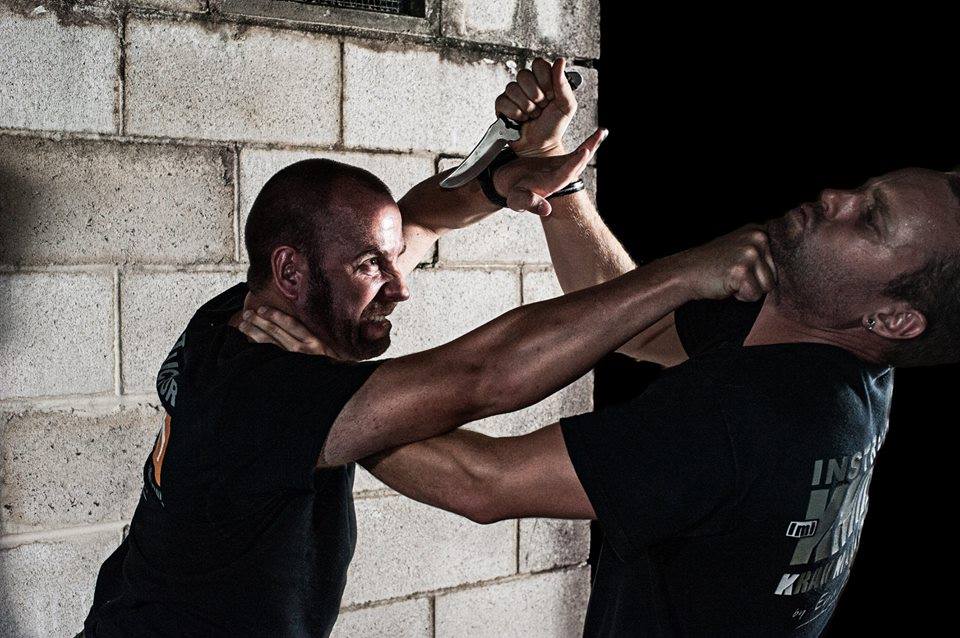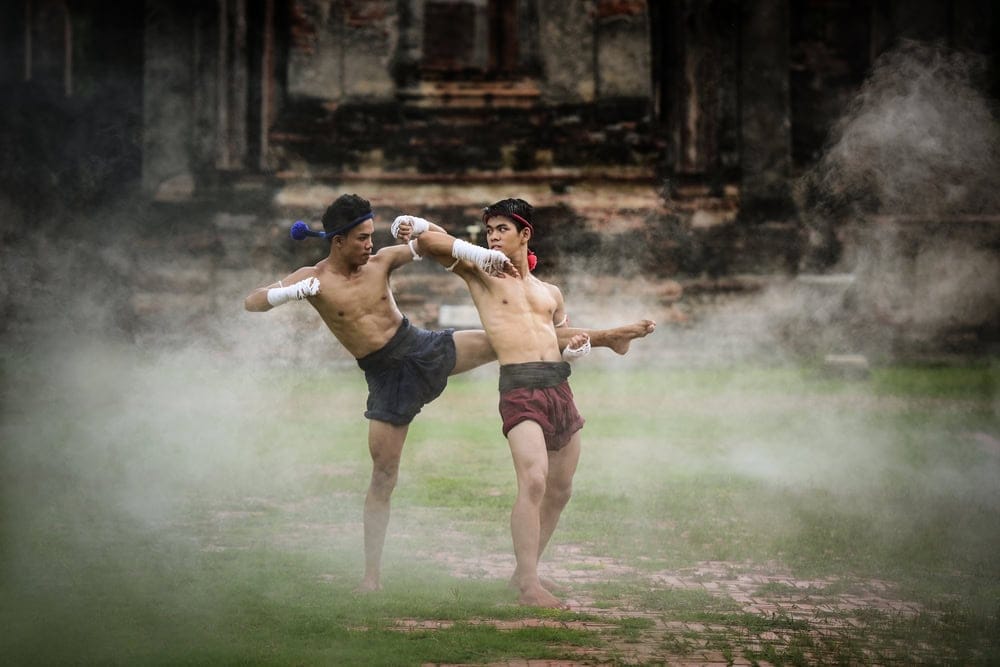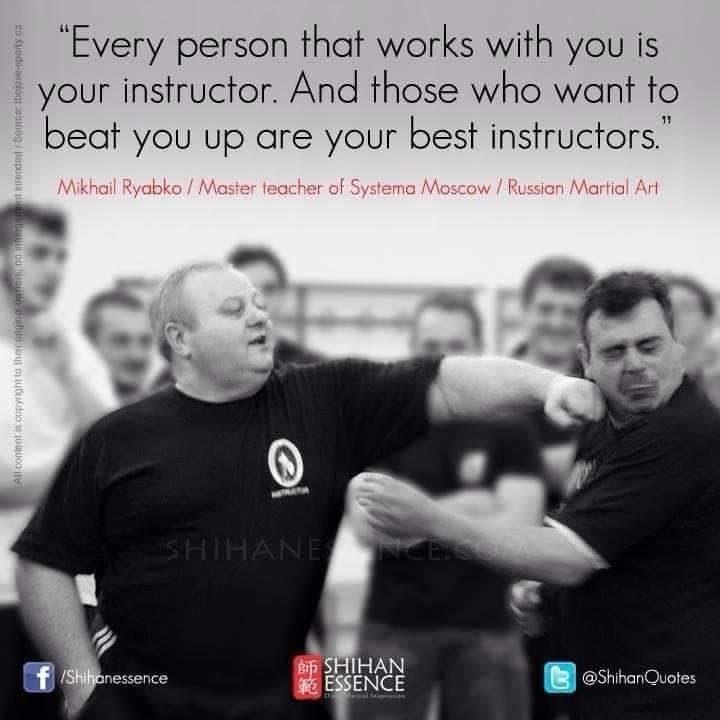Throughout my decades-long journey in martial arts, I've often been asked which fighting styles are truly the most dangerous. It's a question that reveals our fascination with combat's raw edge – that line where disciplined technique meets devastating effectiveness. The most dangerous martial arts represent the pinnacle of what happens when fighting systems are developed not for sport or spiritual growth, but for survival in the most extreme circumstances.
The concept of "danger" in martial arts carries multiple dimensions that extend beyond simple physical damage. While some fighting styles are dangerous due to their lethal techniques, others earn this classification through the brutal training methods required to master them. Some martial arts become particularly hazardous when practiced in their original, unmodified forms rather than the sportified versions we commonly see today.
When we examine the most deadly martial arts, we're really looking at combat systems designed with a singular focus: to neutralize threats with maximum efficiency. These aren't sport-oriented styles with points and referees; they're battlefield-tested methods where the stakes were historically life or death. The techniques found in these systems target vulnerable areas without reservation – eyes, throat, joints, and other vital points that modern combat sports explicitly protect.
The challenge in discussing dangerous martial arts lies in separating myth from reality. Martial arts cinema and internet hyperbole have created misconceptions about certain styles being mysteriously lethal, while sometimes overlooking truly effective combat systems. Additionally, even the deadliest martial art is only as dangerous as the practitioner's skill level, physical attributes, and willingness to apply the techniques.
In this comprehensive guide, I'll analyze what truly makes a martial art dangerous, examine the fighting styles that have earned this reputation, and explore their real-world applications. Drawing from my background in traditional Japanese martial arts and cross-training experiences, I'll provide insights into why these systems developed as they did and what makes them particularly effective.
Let's begin by establishing clear criteria for what qualifies a fighting style as one of the most dangerous martial arts in the world.
What Criteria for Ranking Dangerous Martial Arts?
Before diving into specific fighting styles, it's essential to establish a framework for evaluating what makes a martial art truly dangerous. During my years teaching and training, I've identified several key factors that contribute to a fighting system's potential deadliness.
Lethality & Combat Effectiveness -- How deadly are the techniques?
The primary consideration when discussing the most lethal martial arts is their technical capacity to cause serious harm or death. Certain systems explicitly train lethal techniques targeting vital areas like:
- The throat and trachea
- The eyes and other sensory organs
- The spine, particularly the cervical vertebrae
- Major arteries and pressure points
- Vulnerable joint structures
What separates truly dangerous fighting styles from conventional martial arts is often their lack of sportive limitations. While sport-oriented disciplines must remove or modify their most hazardous techniques for competition safety, deadly martial arts maintain these elements in their training.
I've observed that the most combat-effective systems typically share certain characteristics: they emphasize simplicity over complexity, address multiple ranges of combat (standing, clinch, and ground), and incorporate weapons training alongside unarmed techniques.
Risk of Injury -- Does the practice involve frequent injuries?
Some of the most dangerous martial arts earn their reputation not only from their application against opponents but from the inherent risk to practitioners themselves. Training methods that regularly result in concussions, broken bones, or long-term physical damage create fighters who understand the consequences of combat on a visceral level.
During seminars with practitioners of certain Thai and Burmese systems, I witnessed conditioning drills that would be considered extreme by Western standards – repeated striking of the shins, forearms, and other body parts to deaden nerve endings and strengthen bone density. While effective for creating formidable fighters, these methods extract a significant physical toll.
Military or Street Combat Use -- Is it used in war or self-defense?
A critical indicator of a martial art's danger level is its adoption by military or special forces units. These organizations have no interest in tradition or sporting aspects – they select training methods based solely on battlefield effectiveness.
Systems like Krav Maga, developed for the Israeli Defense Forces, or the Russian Systema used by Spetsnaz units, are designed explicitly for life-or-death scenarios. Their techniques often assume weapon involvement and multiple attackers – situations far removed from the controlled environment of martial arts dojos.
Through my connections with law enforcement professionals who've incorporated various martial arts into their tactical training, I've gained appreciation for how these systems are modified for real-world application, often becoming more streamlined and brutal than their civilian counterparts.
Banned or Restricted Status - Is it outlawed in competitions or certain countries?
Perhaps the most telling indicator of a martial art's danger level is when authorities deem it too hazardous for sporting competition or civilian practice. Throughout history, certain fighting systems have been restricted or outright banned during peacetime because of their potential for lethal application.
Some traditional martial arts contain techniques that are universally prohibited in combat sports – eye gouges, small joint manipulation, and strikes to the spine or throat. Fighting styles that emphasize these forbidden techniques often belong in the category of most dangerous martial arts.
With these criteria established, let's examine the fighting systems that have earned reputations as the deadliest martial arts in the world.
The Most Dangerous Martial Arts
Having established our criteria, let's examine the fighting systems that truly deserve recognition among the most dangerous martial arts in the world. My assessment draws not only from academic research but also from discussions with practitioners and my own cross-training experiences.
Krav Maga
Developed for the Israeli military and security forces, Krav Maga stands as perhaps the most pragmatic and brutally effective self-defense system in modern times. What makes it one of the deadliest fighting styles is its singular focus on neutralizing threats by any means necessary.

Source: balletschooldropout.wordpress.com
Unlike traditional martial arts bound by philosophical constraints, Krav Maga embraces a no-holds-barred approach. Training emphasizes:
- Immediate counterattacks to the most vulnerable targets
- Weapon defense and disarmament techniques
- Simultaneous defensive and offensive movements
- Scenario-based training for multiple attackers
From discussions with Krav Maga practitioners and instructors, I've learned that the system strips away ceremonial elements in favor of brutal efficiency, making it exceedingly dangerous in real-world application. The intensity of their training reportedly exceeds what most traditional martial artists experience in their dojos.
Lethwei
Often called "Burmese bareknuckle boxing," Lethwei deserves recognition as one of the most brutal martial arts still practiced today. What sets Lethwei apart from other striking arts is its allowing of headbutts alongside punches, kicks, knees, and elbows – all delivered without gloves.
Traditional Lethwei matches historically ended only by knockout, with no judges' decisions. The brutal training methods include:
- Conditioning the head and skull to deliver and absorb headbutts
- Striking hard surfaces to deaden nerves in striking surfaces
- Full-contact sparring with minimal protective equipment
Having seen authentic Lethwei demonstrations during my martial arts exploration, I can attest to the sheer ferocity of the art. The psychological impact of facing an opponent trained to use their entire body as a weapon – including deliberate headbutts – creates a uniquely dangerous combat dynamic.
Vale Tudo
Before the UFC and regulated MMA existed, Vale Tudo ("anything goes" in Portuguese) represented no-holds-barred fighting in its purest form. Originating in Brazil, these underground matches featured minimal rules and no weight classes, creating one of the most dangerous fighting environments imaginable.
What made Vale Tudo particularly dangerous:
- Virtually no prohibited techniques beyond eye gouging and biting
- No time limits in traditional matches
- No referee intervention until submission or unconsciousness
- Combination of striking and grappling without protective equipment
The modern Brazilian Jiu-Jitsu we see today was proven through Vale Tudo matches, but those contests were considerably more brutal than today's regulated MMA competitions. The few remaining authentic Vale Tudo events represent some of the most dangerous martial arts competitions still existing.
Systema
Russian Systema remains somewhat mysterious to Western martial artists, but its reputation as one of the most lethal martial arts is well-deserved. Developed for Spetsnaz (Russian special forces) operatives, Systema focuses on exploiting biomechanical weaknesses while maintaining relaxed, fluid movement.
What makes Systema particularly dangerous:
- Emphasis on strikes to vital organs and nerve clusters
- Training for extreme environmental conditions
- Weapon integration (particularly knife fighting)
- Psychological conditioning for combat stress
While less flashy than many Asian martial arts, Systema's clinical approach to combat efficiency places it firmly among the deadliest fighting styles. Its military origins and continued evolution for battlefield application ensure its techniques remain focused on incapacitating opponents rather than scoring points.
Muay Thai
Known as "the art of eight limbs," Muay Thai utilizes punches, kicks, elbows, and knees to create one of the most devastating striking systems ever developed. While now popular as a sport, traditional Muay Thai developed on battlefields and contains techniques too dangerous for competition.
What earns Muay Thai its place among dangerous martial arts:
- Devastating elbow and knee strikes to vulnerable areas
- Bone-crushing low kicks that can immediately disable opponents
- Clinch fighting with destructive short-range strikes
- Traditional conditioning methods that create exceptional pain tolerance
During my limited Muay Thai training, I gained newfound respect for the art's combination of technical sophistication and raw destructive power. A trained Thai boxer represents one of the most dangerous strikers in any combat scenario.
Kyokushin Karate
While many karate styles have become sportified, Kyokushin maintains much of the art's combat effectiveness through its full-contact approach. Founded by Mas Oyama, this style emphasizes conditioning the body to both deliver and absorb punishment.
What makes Kyokushin particularly dangerous:
- Full-force striking to the body in training and competition
- Rigorous conditioning through breaking techniques and impact absorption
- Kumite (sparring) that continues until clear incapacitation
- Technical emphasis on finishing strikes (in training, if not competition)
As someone with a background in traditional karate before transitioning to Aikido, I recognize Kyokushin's approach as closer to karate's combative roots than many other modern styles. A seasoned Kyokushin practitioner develops striking power that can cause severe internal damage with single well-placed blows.
Brazilian Jiu-Jitsu (BJJ)
While perhaps surprising to see on this list, BJJ earns its place among dangerous martial arts through its systematic approach to rendering opponents helpless through joint manipulation and strangulation techniques. What makes BJJ particularly lethal is how it enables smaller practitioners to control and potentially seriously injure larger attackers.
The dangerous aspects of BJJ include:
- Choke techniques that can cause unconsciousness within seconds
- Joint locks that can permanently damage ligaments and tendons
- Control positions that leave opponents defenseless against strikes
- The ability to neutralize multiple attackers by using one as a shield
I've observed how quickly BJJ transforms practitioners' understanding of physical confrontation. A skilled BJJ practitioner possesses knowledge of human anatomy and leverage that makes them extraordinarily dangerous in close-quarter combat.
Several other fighting systems deserve mention among the most dangerous martial arts, including Pencak Silat (Indonesian martial art with weapons focus), Sambo (Russian combat sport with military applications), Sanda (Chinese military boxing), and traditional Kung Fu styles that maintain their combat applications.
Dangerous Martial Arts Comparison Chart
| | |
|---|
| - Neutral Threat By Any Means Necessary - Brutal Efficiency by Stripping Away Ceremony | - Immediate Counterattacks - Weapons Disarmament - Multiple Attacker Training |
| - Striking Art that Includes Headbutts - Entire Body Used as A Weapon | - Conditioning of Skull - Striking Hard Surfaces to Deaden Nerves - Full Contact Sparring |
| - Anything "Goes" No Holds Barred - More Brutal Than Regulated MMA | - No Time Limits - No Eye Gouging or Biting - No Referee - No Protective Gear |
| - Exploits Biochemical Weaknesses - Clinical Approach to Combat Efficiency | - Strikes to Vital Organs
- Extreme Conditions Training
- Weapons Integrations
- Psychological Conditioning |
| - One of the Most Devastating Striking Systems Ever Developed - Combination of Technical Sophistication and Raw Destructive Power | - Devasting Strikes to Vulnerable Areas
- Bone Crushing Low Kicks
- Clinch Fighting
- Conditioning for High Pain Tolerance |
| - Conditioning to Both Deliver and Absorb Punishment - Practitioners develops striking power that can cause severe internal damage with single well-placed blow | - Full Force Striking in Training
- Rigorous Conditioning
- Sparring until Incapacitation
- Technical Emphasis on Finishing Strikes (in training |
| - Systematic approach to rendering opponents helpless through joint manipulation and strangulation techniques | - Choke techniques that cause unconsciousness in seconds
- Joint locks that can permanently damage ligaments and tendons
- Control positions that leave opponents defenseless against strikes |
How Dangerous Martial Arts Are Used in Real Life
Understanding how the deadliest martial arts translate to real-world scenarios provides important context for their development and continued relevance. The application of these fighting systems extends far beyond competition or self-defense into specialized professional realms.
Military and special forces units worldwide incorporate elements from various dangerous martial arts into their close-quarters combat training. These organizations typically create hybrid systems that emphasize:
- Quick incapacitation techniques
- Weapon retention and disarmament
- Small unit tactical movement integrated with hand-to-hand combat
- Psychological conditioning for high-stress combat scenarios
Law enforcement agencies similarly adapt techniques from deadly martial arts to suit their unique requirements, though with greater emphasis on control rather than damage. The challenge for these professionals is modulating force appropriately while maintaining effective defensive capabilities.
For civilians, the most dangerous martial arts often require modification for legal and ethical self-defense. While training might include deadly techniques, responsible schools emphasize:
- Avoidance and de-escalation as primary strategies
- Proportional response to threats
- Legal implications of using potentially lethal techniques
- Ethical considerations regarding necessary force
Through conversations with military and law enforcement professionals who train in these systems, I've gained appreciation for how the most lethal martial arts principles are adapted for different contexts while maintaining their core effectiveness.
Is Training in a Dangerous Martial Art Right for You?
Before pursuing training in one of the most dangerous fighting styles, potential students should carefully evaluate their goals, capabilities, and ethical boundaries. Having guided many students through their martial arts journeys, I believe this self-assessment is crucial.
Consider these factors when evaluating deadly martial arts training:
- Training Purpose: Be honest about why you're drawn to dangerous martial arts. Self-defense, professional requirements, and physical fitness are valid reasons; seeking the ability to harm others is not.
- Physical Readiness: Many of the most brutal martial arts demand exceptional conditioning. Assess whether your current fitness level aligns with these demands or if you need preliminary conditioning.
- Risk Tolerance: Training in dangerous martial arts often involves accepting a higher injury risk than conventional sports. Consider your personal and professional circumstances when evaluating this risk.
- Ethical Framework: Developing potentially lethal skills carries significant responsibility. Ensure you have the maturity and ethical grounding to handle such knowledge appropriately.
From my teaching experience, I've found that many people initially attracted to the deadliest fighting styles actually find greater satisfaction in less extreme martial arts that better balance tradition, sport, and practical application. The most dangerous martial art isn't necessarily the best choice for everyone's goals.
For those who do pursue training in these systems, finding qualified instruction is paramount. Look for instructors with verifiable credentials, professional backgrounds in relevant fields (military, law enforcement), and a thoughtful approach to teaching dangerous techniques.
Final Thoughts on the Most Dangerous Martial Arts in the World
The landscape of dangerous martial arts reveals much about human conflict throughout history. These deadly fighting styles emerged from environments where combat effectiveness meant survival – battlefields, dangerous streets, and territories where law enforcement offered limited protection.
What fascinates me most about the most lethal martial arts is how they balance technical sophistication with brutal pragmatism. While some complex traditional forms may appear beautiful but lack combat applicability, truly dangerous systems maintain a direct line between training methods and effective application.
For those considering training in one of these systems, remember that the most dangerous martial art for any situation depends on numerous factors: the practitioner's skill level, physical attributes, environmental conditions, and the specific threat encountered. No single fighting style provides universal superiority in all scenarios.
My advice after decades in martial arts: choose your training based on your genuine needs and ethical boundaries rather than pursuing danger for its own sake. The true measure of a martial artist isn't their capacity for violence but their judgment in knowing when and how to use their skills – and more importantly, when not to.




